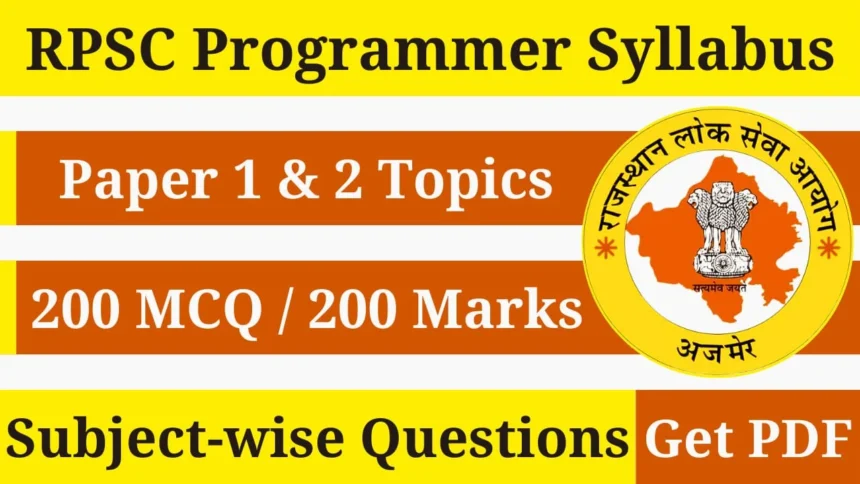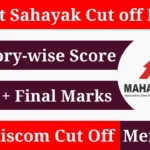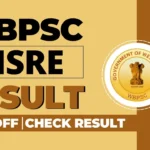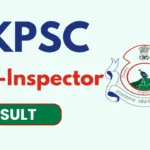The Rajasthan Public Service Commission (RPSC) has released the syllabus for the Programmer exam. You can download the syllabus and exam structure from this page. It’s important to study the syllabus carefully to prepare for the exam. The syllabus covers different topics that might be included in the exam questions. The exam pattern provides information about the scoring system, types of questions, and how marks are distributed among different sections.
The RPSC Programmer exam consists of two papers, each worth 100 marks. You have 2 hours to complete each paper. There’s a penalty for unanswered questions: you’ll lose ⅓ mark for each question you don’t answer. This means it’s important to choose your answers carefully.
Rajasthan Programmer Examination Scheme Overview
| Recruitment Agency | Rajasthan Public Service Commission |
| Exam Name | Programmer |
| Total Questions | Paper-1: 100 Paper-2: 100 |
| Total Marks | Paper-1: 100 Paper-2: 100 |
| Negative Marking | 0.33 Marks |
| Official Website | https://rpsc.rajasthan.gov.in/ |
RPSC Programmer Paper 1 Exam Syllabus
Reasoning, GK & Numerical Analysis
The syllabus covers a wide variety of subjects, including reasoning, math, and general knowledge. It focuses on your ability to solve problems with data, decide if you have enough information, and use logic and analysis. It also covers general knowledge and current events about India and Rajasthan.
Data Base Management Systems
This includes learning about ER Diagrams and different types of databases (like Relational and Object-Oriented). You’ll also learn how to design databases, including using concepts like Normalization. You’ll understand different kinds of data and the difference between physical and logical databases. The course will also cover important topics like data abstraction, independence, aggregation, and the basics of Relational Algebra.
Application Development using SQL
The module teaches how to use SQL to create and manage databases. It covers how to use SQL with other programming languages, how to include SQL in your code, and how to create and manage stored procedures, triggers, and views. It also emphasizes the importance of using constraints and assertions to keep data accurate.
Internal of RDBMS
The course focuses on how databases work. It explains how data is stored on computers and uses special structures like B trees and B+ trees to organize it efficiently. It also talks about how to make queries run faster, different ways to join tables, and the basics of transaction processing. This includes how to make sure different actions happen correctly at the same time, how to recover from problems, and how to follow rules to keep the database reliable and consisten.
Data Communication and Computer Networks
This section teaches students about how computer networks work. It compares different ways to send information, like circuits, packets, and messages. It also explains basic ideas about network layers, like the physical and data link layers, and how to send and resend data. The syllabus talks about different ways to access networks, fast network layouts, and how networks find their way. It also discusses the internet, including important parts like TCP/IP, DNS, firewalls, and how to protect against threats. Finally, it emphasizes managing networks and making sure they work together.
Rajasthan Programmer Paper 2 Syllabus
System Analysis and Design
This section explains how to create systems. It talks about the basic ideas and methods used in building systems. It includes understanding what systems are and what they do, as well as their parts and limitations. It also explores different ways to develop systems. It emphasizes the importance of knowing what is needed, checking if it’s possible, and using examples. The system analyst is very important in this part, using tools like data flow diagrams, data dictionaries, and decision tables to make the process easier. It also talks about different software life cycle models and engineering frameworks to help develop software in a structured way. The analysis phase focuses on studying if it’s possible, understanding requirements, and analyzing costs and benefits. The design phase focuses on creating modular and object-oriented designs.
Programming Concepts
The development of a system focuses on writing clear code, creating detailed program plans, and making it work as efficiently as possible. It’s important to check, verify, and test the software thoroughly using different methods to ensure it’s reliable. After it’s finished, it’s crucial to maintain it properly, considering its features, how easy it is to manage, and the challenges of keeping it updated.
When talking about programming, the internet and Java are key tools for creating web applications. Byte Code is a valuable feature of Java, and understanding object-oriented programming is essential. Java programming covers a wide range of topics, from basic concepts like variables and data types to more advanced ones like control flow, arrays, and strings. It also includes an overview of technologies like Java Server Pages, Remote Method Invocation, applets, servlets, and provides an introduction to the DotNet framework and visual programming interfaces.
RPSC Programmer Exam Pattern 2024
The RPSC Programmer exam has two papers, each two hours long. If you don’t answer a question, you’ll lose points. The exam uses paper and OMR sheets. The details of what’s on each paper are explained to help you study.
| Paper | Subject | Questions | Marks |
|---|---|---|---|
| 1. | Reasoning, Numerical Analysis, GK & Data Management | 100 | 100 |
| 2. | System Analysis, Programming, Internet and Java | 100 | 100 |
Direct Links
- RPSC Programmer Syllabus: Download PDF
- Official Website: Visit Here







